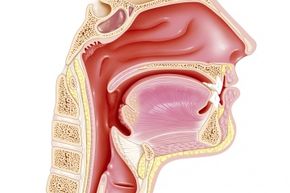
Lisa Alamia had an overbite sufficiently pronounced for her to require jaw surgery. That kind of operation is pretty serious and requires complete sedation. When Alamia woke up, she was hoping it would be her new jawline that impressed people. Instead it was the way she spoke.
Before Alamia had the surgery, she possessed a gentle Texas drawl, which made sense because she was born, raised and continued to live in Texas. But after the surgery, Alamia didn't sound Texan at all — she sounded British.
Advertisement
Her husband and three kids thought she was putting it on, but Alamia couldn't seem to shake her new sound. The weird thing was that she'd never even been to England. The only time she'd left the U.S. was to go to Mexico. Alamia's kids used to listen up when she lectured them in her old Texas accent, but now that she sounded like she could be serving tea to the Crawleys of "Downton Abbey," they just couldn't take her seriously [source: Friedman].
Things could be worse. During World War II, a Norwegian woman named Astrid suffered a brain injury from shrapnel that exploded during a bombing raid. When she recovered and was able to speak, she had inexplicably developed a German accent. This was extremely inconvenient: Norway was, at the time, occupied by the Germans. Anybody who didn't know her well assumed she was attached to the occupying enemy force. Shopkeepers refused to serve her, and neighbors shunned her, even though she had never been to Germany and didn't speak a word of German [source: Beck].
When Astrid saw neurologist Georg Herman Monrad-Krohn, he referred to her speech as "dysprosody." Prosody refers to the non-grammatical elements of speech, like tone and rhythm. The condition would come to have a different name by the time Lisa Alamia reported her problem to her doctor and managed to convince him that she wasn't faking it. The neurologist who eventually diagnosed Alamia, referred to her condition as "foreign-accent syndrome" (FAS), a term coined in the 1980s. FAS is an extremely rare form of language disorder — so rare, in fact, that there are only about 100 known case studies of the phenomenon [source: Keulen].
Advertisement



